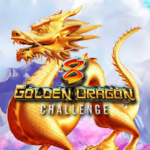The Evolution of Home Gaming: PlayStation 4 to PlayStation 5
Sony’s PlayStation legacy transformed living rooms worldwide, with the PS4 setting unprecedented benchmarks in accessibility and exclusive titles. Its 2013 debut introduced seamless social sharing, robust indie support, and genre-defining games like The Last of Us Part II and God of War. The console’s emphasis on developer-friendly architecture fueled a golden age of narrative-driven experiences, while PlayStation Plus became essential for multiplayer engagement. However, hardware limitations in loading times and ray tracing grew apparent as technology advanced.
Enter the PS5, a quantum leap in immersion and performance. Launched in 2020, it leveraged custom SSD storage to eliminate loading screens, enabling near-instant transitions in sprawling worlds like Ratchet & Clank: Rift Apart. The revolutionary DualSense controller added tactile feedback and adaptive triggers, making actions like drawing a bowstring feel tangible. Backward compatibility preserved the PS4’s vast library, while exclusives such as Demon’s Souls and Returnal showcased 4K/60fps capabilities. Sony’s commitment to the ecosystem is evident through timed exclusivity deals and PlayStation VR2 integration, cementing its position as a powerhouse for cutting-edge entertainment beyond traditional gaming.
Nintendo Switch: Revolutionizing Hybrid Play and Pokemon Adventures
Nintendo disrupted the market in 2017 with the Nintendo Switch, a hybrid console merging home and portable play. Its detachable Joy-Con controllers enabled unprecedented flexibility—dock it for TV gaming, use it tablet-style, or share controllers for impromptu multiplayer. This versatility fueled massive hits like The Legend of Zelda: Breath of the Wild and Animal Crossing: New Horizons, which sold over 30 million copies each. The platform’s family-friendly focus and indie embrace created a diverse catalog appealing to all ages.
For Pokemon fans, the Switch became a renaissance. Core RPGs like Pokemon Sword/Shield and Scarlet/Violet delivered open-world exploration, while spin-offs like Pokemon Legends: Arceus reinvented capture mechanics. The console also revitalized the Pokemon Trading Card Game (TCG) digitally via Pokemon Trading Card Game Live, bridging physical collections with online battles. Nintendo’s continual hardware iterations—Switch Lite for portability and OLED for enhanced visuals—ensure the platform evolves alongside its franchises. With cloud saves and Nintendo Switch Online expanding retro game access, it remains a uniquely adaptable pillar in modern gaming.
The Allure of Pokemon TCG: Booster Boxes Every Collector Must Have
Pokemon TCG booster boxes represent the pinnacle of strategic gameplay and high-stakes collecting. Each sealed box contains 36 packs, guaranteeing rare pulls like Ultra Rares or Alternate Arts. Sets often tie into video game releases or anime milestones, driving frenzied demand. For competitive players, boxes provide the card volume needed to build meta-defining decks, while collectors chase elusive chase cards that can appreciate dramatically in value. Recent expansions have introduced new mechanics like VSTAR powers and radiant holographics, keeping gameplay dynamic.
Among the most sought-after modern releases, the Mega Brave Booster Box features powerful Trainer cards and Gigantamax Pokemon from the Galar region. Meanwhile, PRB-02 Booster Box—officially “Shiny Star V” in English—is renowned for its staggering “shiny” Pokemon rates, including coveted Charizard variants. For enthusiasts seeking premium options, the Mega Symphonia Booster box offers exclusive Full Art Supporters and intricate etched foil treatments. This Japanese-exclusive set (adapted internationally as “Fusion Strike”) remains a grail for its artistic detail and competitive staples like Mew VMAX. Whether cracking packs for fun or investing in sealed product, these boxes encapsulate Pokemon TCG’s thrilling blend of nostalgia and innovation.


